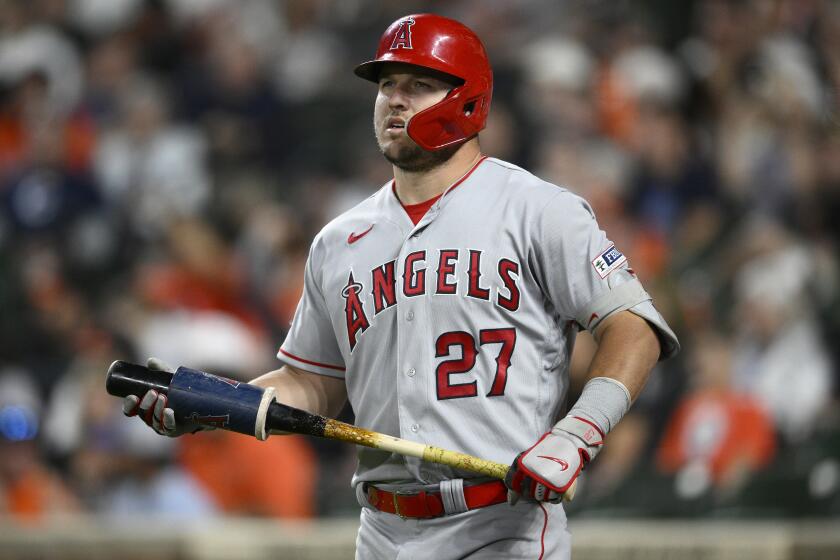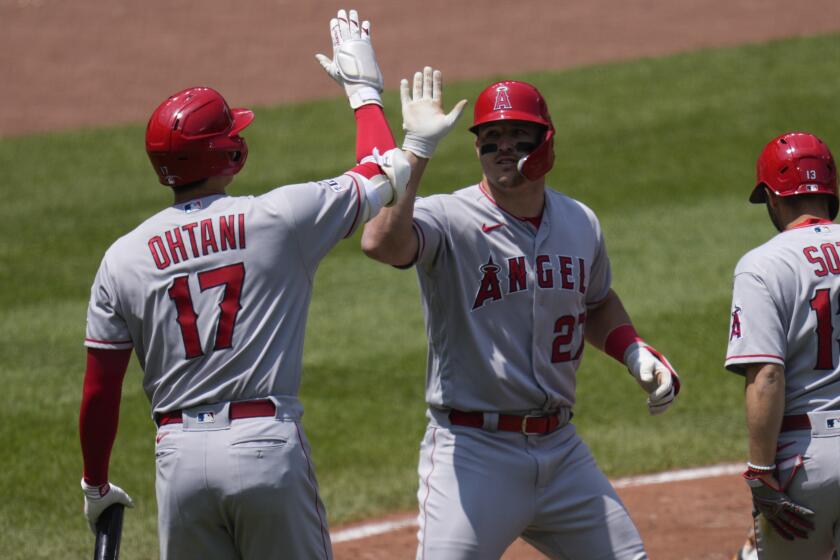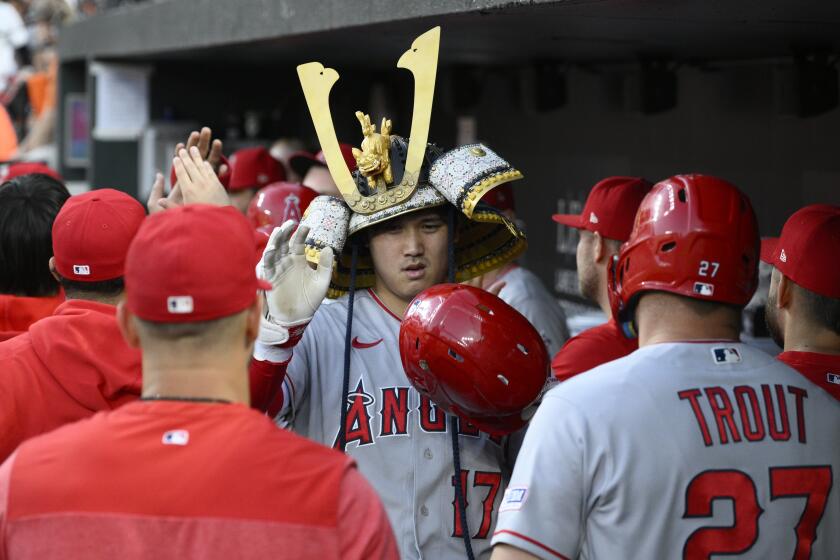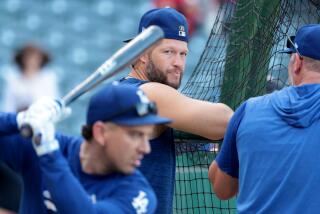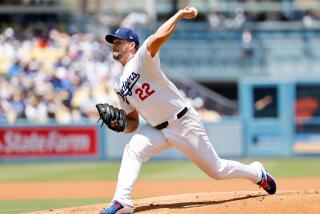Jared Walsh, feeling better after battling neurological issues, returns for Angels
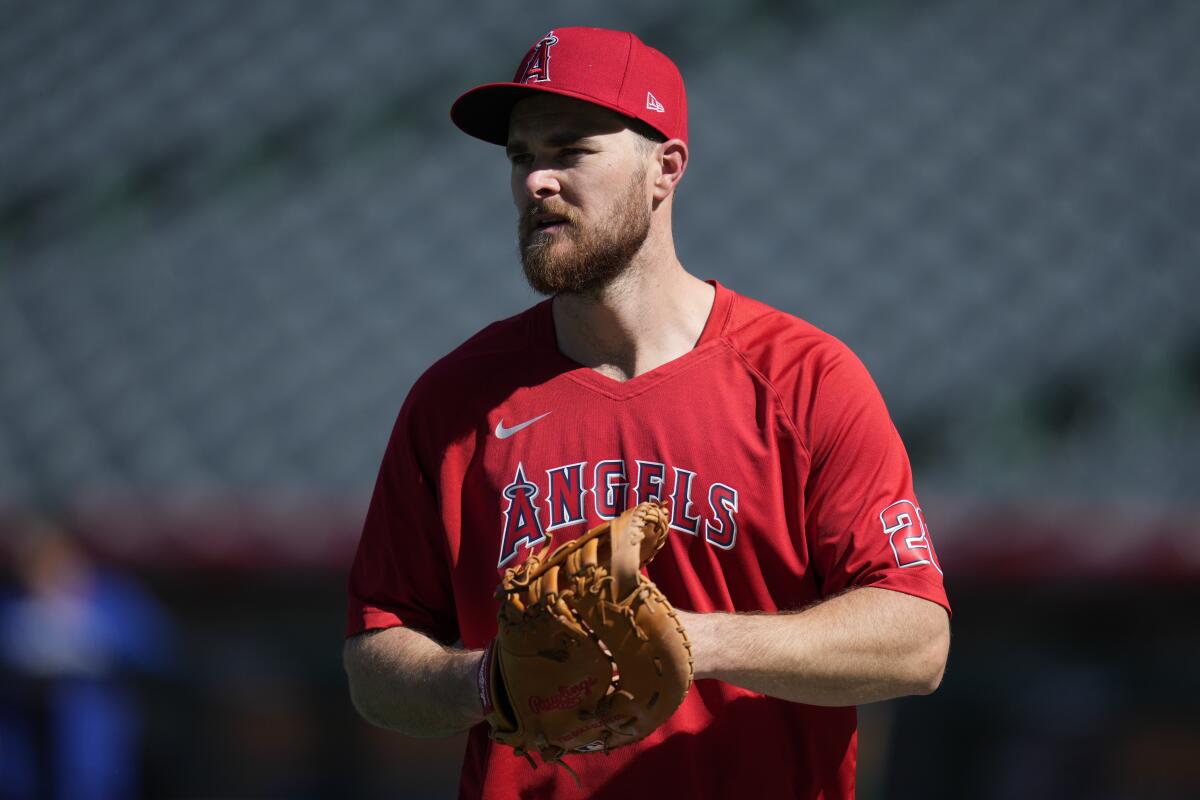
Jared Walsh has been waiting for this moment.
The Angels first baseman, who hit pause on his start to the season while trying to sort out what was causing him so much neurological anguish, finally found himself back in the big league lineup for Saturday nightâs 6-2 loss to the Minnesota Twins at Angel Stadium.
Walsh drove in the Angelsâ first run on a groundout in the fourth inning. He went 0 for 4 and struck out once but played solid defense at first base.
âYeah, it was good,â Walsh said. âReally exciting. It felt a little foreign at first but as the game went on, got a lot more comfortable.â
Walsh is anticipating playing through rust at the plate and defensively. âItâs definitely a process and hopefully I keep on improving, but [I feel] a lot better than I felt last year, which is all I can ask for,â he said before the game.
âBeen chomping at the bit to get back to playing baseball again and finally doing it.â
Walsh, after having the equivalent of an extended spring training starting the season on the injured list, is anticipating playing through some rust both at the plate and defensively. Phil Nevin expects the same thing, but the Angels manager sees Walshâs return from the injured list as a big plus.
âWe planned on him being our first baseman,â Nevin said. âIt just wasnât that way for the first month and a half. ... We had plenty of guys that worked over there and filled in and did a fine job, but heâs been our guy and we expect him to be.â
Mike Trout knows he isnât getting younger, but the Angels star knows how important it is to take care of himself in order to stay healthy.
There are no restrictions or limitations on Walsh for his return.
âHeâs been full go and ready, just as he was if he were to start the season,â Nevin said. âMy conversations with him is heâs back, heâs ready to go, he feels like himself.â
Walsh, for the better part of 1½ years has been dealing with neurological and vestibular issues, such as dizziness, confusion, fatigue, headaches and insomnia.

âThere was just kind of a general fogginess,â Walsh said of what playing in a game was like last season. âTrouble fixating my gaze with my eyes ... and then just not really having a great idea of where my body was at in a space.
âThose are all things that Iâve made a lot of progress in.â
Walsh, an All-Star in 2021, played 118 games last season, hitting for the cycle in one Angels win, but his season was cut short after he needed surgery to correct thoracic outlet syndrome.
Shohei Ohtani hit a tiebreaking infield single in the eighth and Hunter Renfroe made a terrific throw in the ninth to preserve the Angelsâ 6-5 win.
Walsh started this season on the IL despite having a strong spring training, wanting answers to his cognitive and vestibular problems. He found a clinic, with the help of his mother, Lisa, near the Angelsâ triple-A facility in Salt Lake City. There, he found answers. The specialists surmised his symptoms were the result of contracting COVID three times, but they could not conclusively say that was the case.
Almost two months since he first went to that clinic, Walshâs symptoms have eased significantly. He also has a much better understanding of how to manage the symptoms.
âWhen I knew something was wrong, Iâd be walking and, like, bump into a wall,â Walsh said of his symptoms, âIâm like, âWhat am I doing?â So, just being really clumsy all the time was really scary to me.â
Walsh explained that he has been using a Leif Therapeutics device, though he did not do so in any of his rehabilitation games. The device straps close to his ribs and measures his heart rate variability as part of his symptom management.
Shohei Ohtani became the first starting pitcher since 1964 to reach base five times in a game in the Angelsâ 9-5 win over the Baltimore Orioles.
âIf youâre getting to a point where youâre real foggy or I have a headache or Iâm feeling really lethargic, itâs usually my heart rate variability is plummeting,â Walsh explained. âSo what happens is if you go about breathing the right way, it kind of brightens up a little bit.
âI guess thatâs one of the things thatâs been weird to me. I didnât notice, but throughout all this, my breathing patterns got thrown off in some way.â
At the clinic, Walsh was taught to take two to three minutes to breathe through those moments when his heart rate variability would go down.
And doctors have continued to be optimistic that one day those symptoms will completely subside.
âThey keep saying, âYouâre gonna be 100% good,â and all that,â Walsh said. âSo Iâm gonna stay in touch with them, but hopefully [Iâm symptom-free] sooner rather than later.â
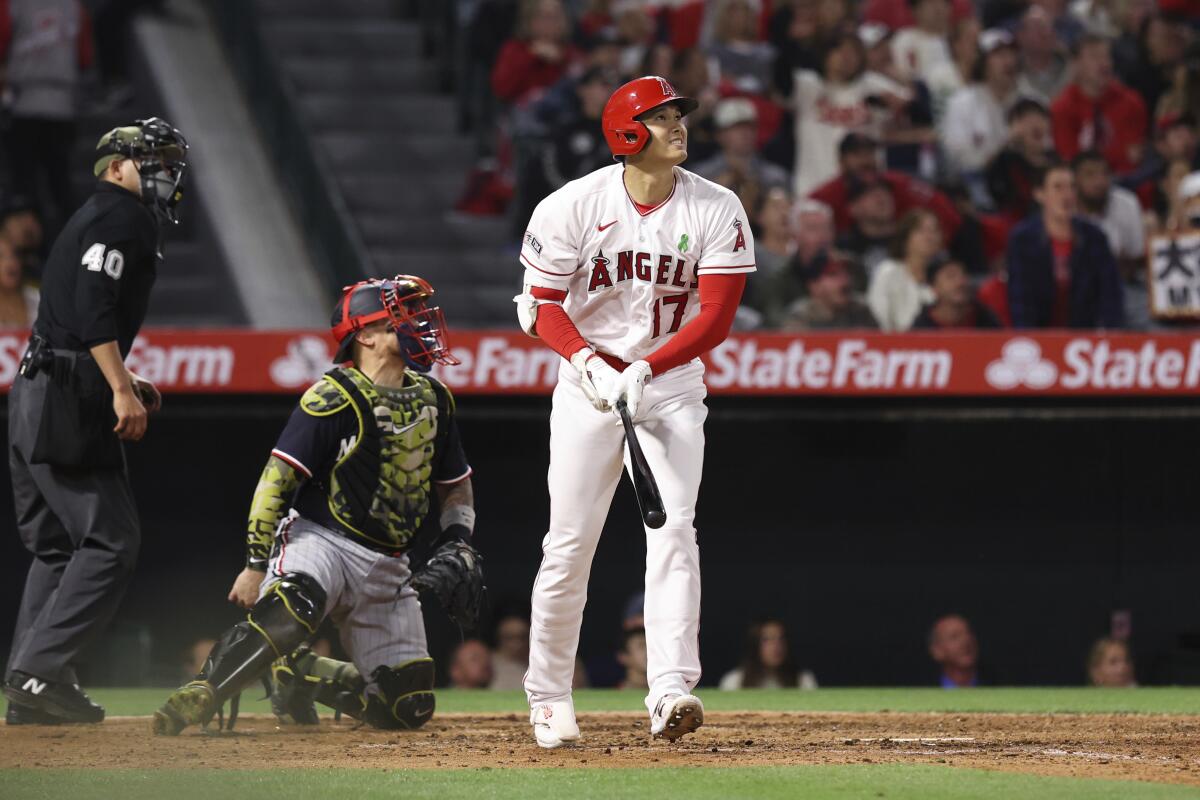
More to Read
Go beyond the scoreboard
Get the latest on L.A.'s teams in the daily Sports Report newsletter.
You may occasionally receive promotional content from the Los Angeles Times.

